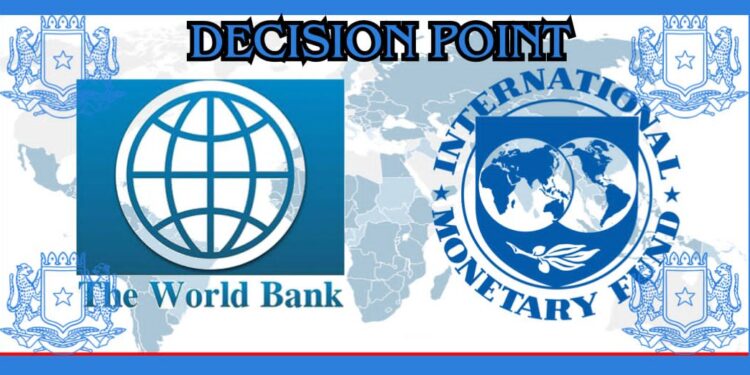In a watershed second for Somalia’s financial trajectory, the nation celebrates the end result of a decade-long course of: a $4.5 billion debt write-off from world lenders. This outstanding achievement not solely signifies a big discount in Somalia’s exterior debt but in addition units the stage for a brand new period of financial prospects. Because the nation settles into the East African Neighborhood (EAC), simply two weeks after its admission, it’s poised to showcase the dividends of sustained negotiations and complete reforms.
Background: A Decade of Negotiations and Reforms
1.1 The Closely Indebted Poor Nations (HIPC) Initiative
The improved Closely Indebted Poor Nations (HIPC) Initiative, a worldwide framework designed to supply debt aid to the world’s most impoverished nations, has been on the coronary heart of Somalia’s journey. Initiated over a decade in the past, this multilateral and bilateral effort aimed to alleviate the burden of Somalia’s staggering $5.2 billion debt.
1.2 The Position of Multilateral and Bilateral Lenders
The World Financial institution and the Worldwide Financial Fund (IMF), amongst different influential lenders, performed pivotal roles in supporting Somalia’s financial revitalization. Their dedication to debt aid and the implementation of complete reforms has been instrumental in bringing about this transformative change.
The Financial Panorama: Earlier than and After
2.1 Dramatic Debt Discount
The debt write-off has not solely introduced aid to Somalia’s monetary panorama however has considerably altered its financial standing. With the debt diminished from $5.2 billion to $600 million, Somalia’s exterior debt has plummeted to lower than six p.c of its GDP. This stark distinction from the alarming 64 p.c recorded in 2018 is a testomony to the effectiveness of strategic negotiations and focused reforms.
2.2 Classes from Different Indebted States
Evaluating Somalia’s journey with different nations dealing with related challenges offers precious insights. The resilience and dedication demonstrated by Somalia amidst frequent climatic hazards and widespread fragility underscore the nation’s capacity to navigate advanced financial waters efficiently. This achievement units a precedent for efficient debt administration, providing a blueprint for different indebted states.
3.1 Integration and Regional Collaboration
Somalia’s admission to the East African Neighborhood (EAC) is a big geopolitical improvement that enhances the nation’s regional affect. As the most recent member of this financial bloc, Somalia now has alternatives for elevated commerce, collaboration on regional points, and shared financial prosperity. This integration aligns with the nation’s broader financial objectives and positions it as a key participant in East Africa.
3.2 Synergies and Alternatives
The confluence of the debt write-off and EAC membership opens up synergies and alternatives for Somalia. Free of the shackles of overwhelming debt, the nation can actively take part in regional initiatives, foster financial partnerships, and contribute to the collective progress of East Africa. The newfound monetary flexibility permits Somalia to have interaction in mutually useful collaborations and investments.
Analyzing Somalia’s Reforms and Negotiations
4.1 Prudent Fiscal Administration
Somalia’s success in securing debt aid is a testomony to its dedication to prudent fiscal administration. By means of cautious planning and strategic financial reforms, the nation has demonstrated its capacity to handle fiscal challenges systematically. Transferring ahead continued fiscal accountability shall be essential to sustaining monetary stability and stopping a return to unsustainable debt ranges.
4.2 Clear Governance
Transparency in governance has been a cornerstone of Somalia’s reform agenda. The nation’s dedication to accountability and openness has performed a pivotal function in gaining the belief of worldwide lenders. As Somalia enters a brand new part of financial improvement, sustaining clear governance practices shall be important to draw overseas investments and guarantee sustained progress.
4.3 Structural Reforms for Lengthy-Time period Stability
The excellent structural reforms undertaken by Somalia haven’t solely paved the way in which for debt aid however have additionally laid the inspiration for long-term financial stability. Addressing systemic points, similar to bettering institutional capability and streamlining regulatory frameworks, positions Somalia favorably for sustained progress. The continued implementation of those reforms shall be crucial for solidifying the nation’s financial resilience.
The Method Ahead: Harnessing Financial Liberation
5.1 Directing Sources to Essential Sectors
With the burden of debt lifted, Somalia can now redirect assets to crucial sectors similar to schooling, healthcare, and infrastructure. Investing in these areas is crucial for fostering inclusive improvement, bettering social indicators, and creating an setting conducive to sustainable financial progress.
5.2 Stimulating Job Creation and Inclusive Progress
The diminished debt burden offers Somalia with the chance to deal with job creation and inclusive financial progress. By fostering a conducive enterprise setting and selling entrepreneurship, the nation can harness its newfound monetary liberation to uplift its residents and cut back unemployment charges.
5.3 Attracting Overseas Investments
A key benefit of the debt write-off is Somalia’s enhanced capability to draw overseas investments. The nation’s improved financial outlook and dedication to reforms make it a horny vacation spot for buyers in search of alternatives in a post-conflict setting. Making a welcoming and steady funding local weather shall be essential in leveraging this benefit.
Conclusion: A New Chapter in Somalia’s Financial Narrative
In conclusion, Somalia’s achievement of a $4.5 billion debt write-off represents greater than only a monetary milestone. It symbolizes the nation’s resilience, dedication, and efficient negotiation methods within the face of formidable challenges. As Somalia embarks on a post-debt write-off period, the emphasis on strategic financial planning, accountable governance, and collaboration shall be instrumental in realizing the complete potential of this newfound monetary liberation.
The worldwide neighborhood watches with anticipation as Somalia navigates the trail to sustained prosperity, setting an inspiring instance for nations dealing with related challenges. The profitable integration into the East African Neighborhood provides one other layer of optimism, signaling Somalia’s emergence as a regional financial participant.
Because the nation continues to put in writing its financial narrative, the teachings realized from this transformative journey will echo far past its borders, inspiring others to beat adversity and pursue a path of sustainable improvement.
Roble Ahmed Idle – Author
College for Peace, UN Mandated









